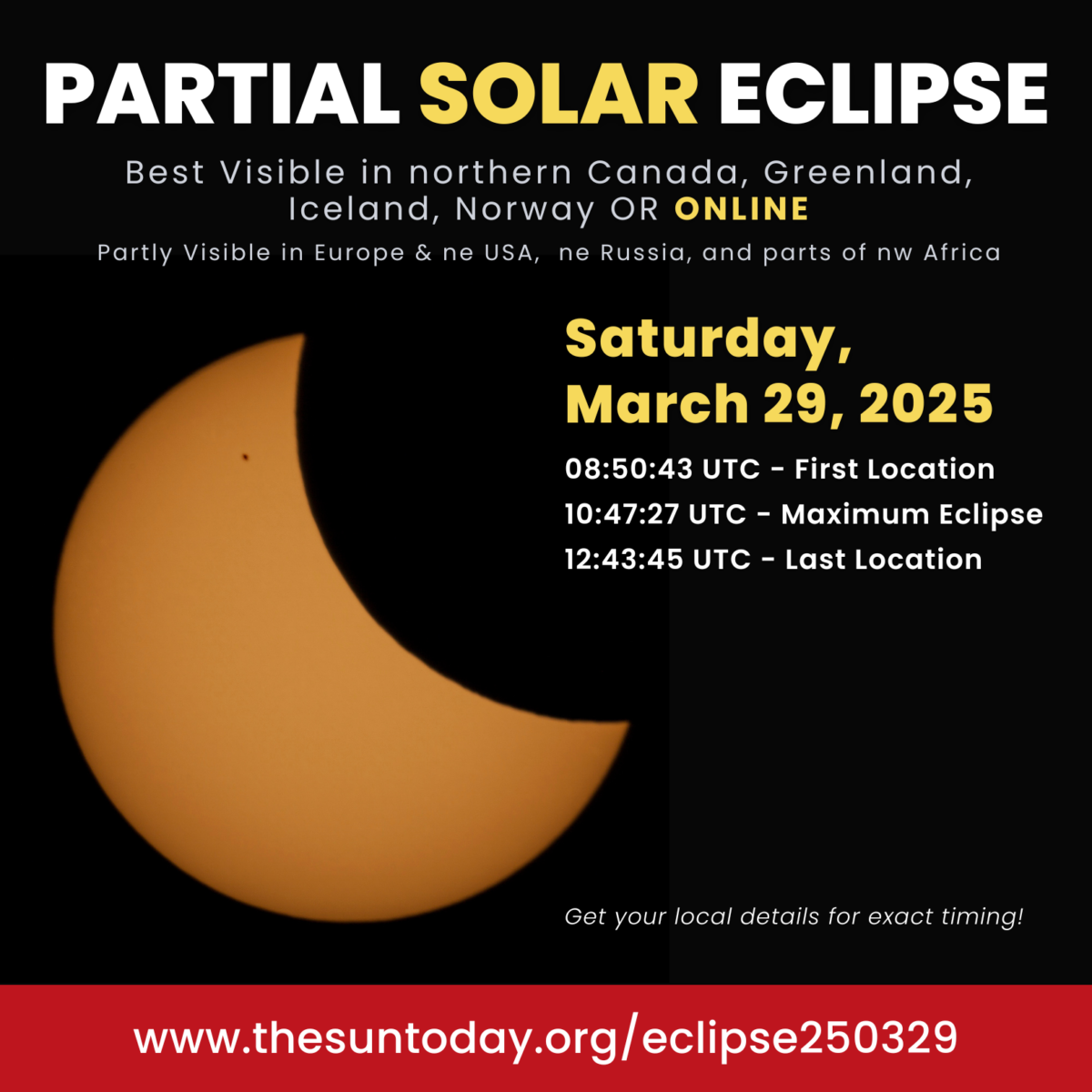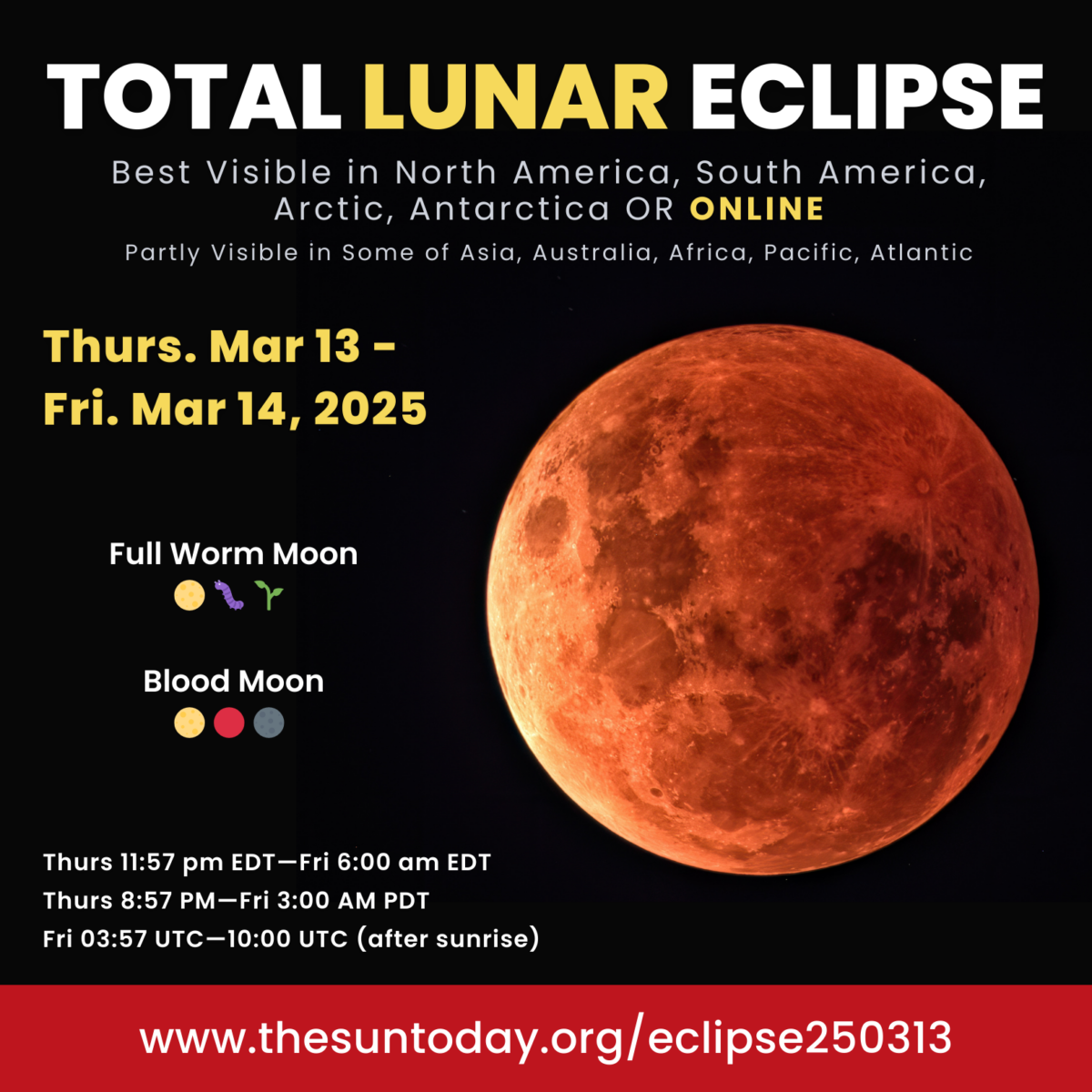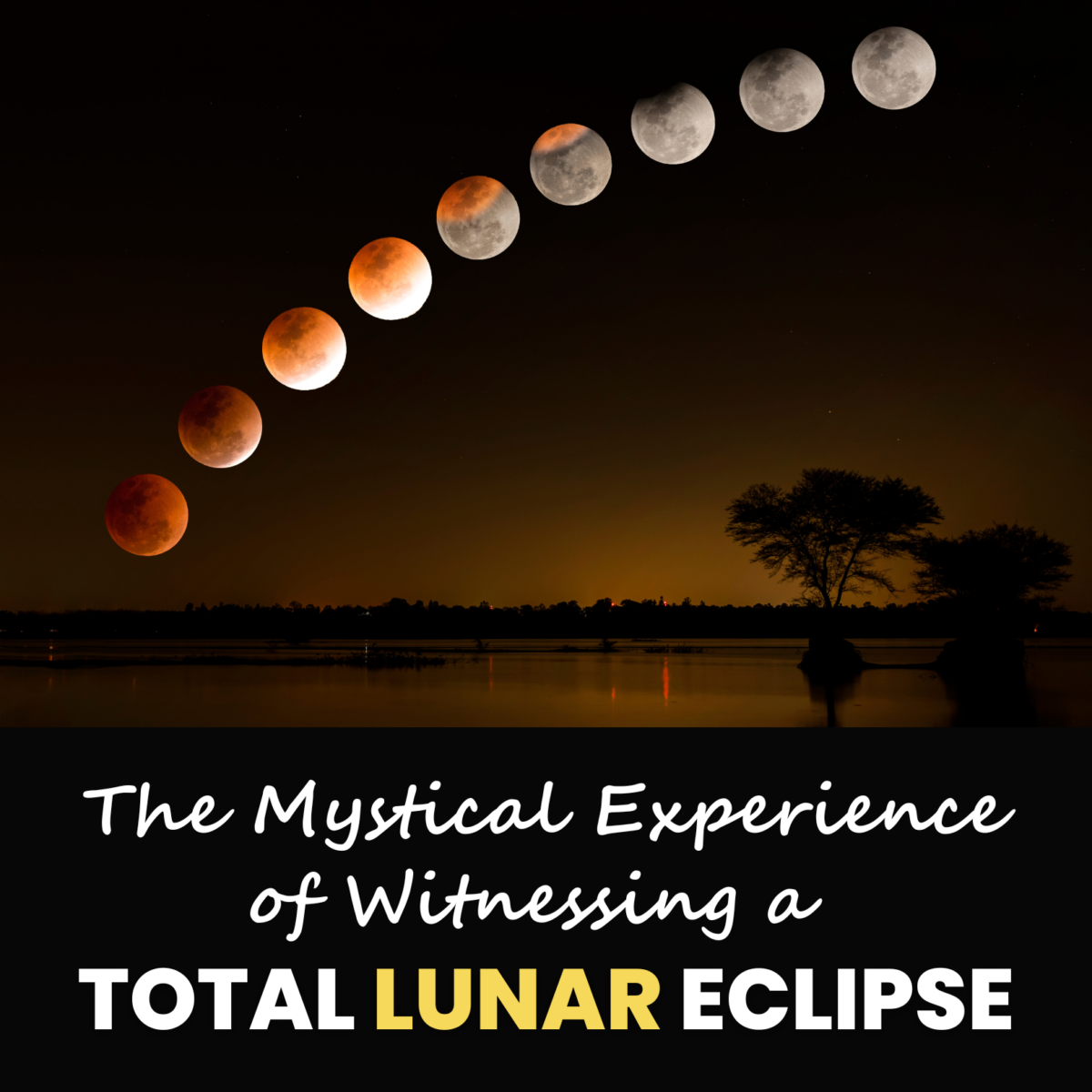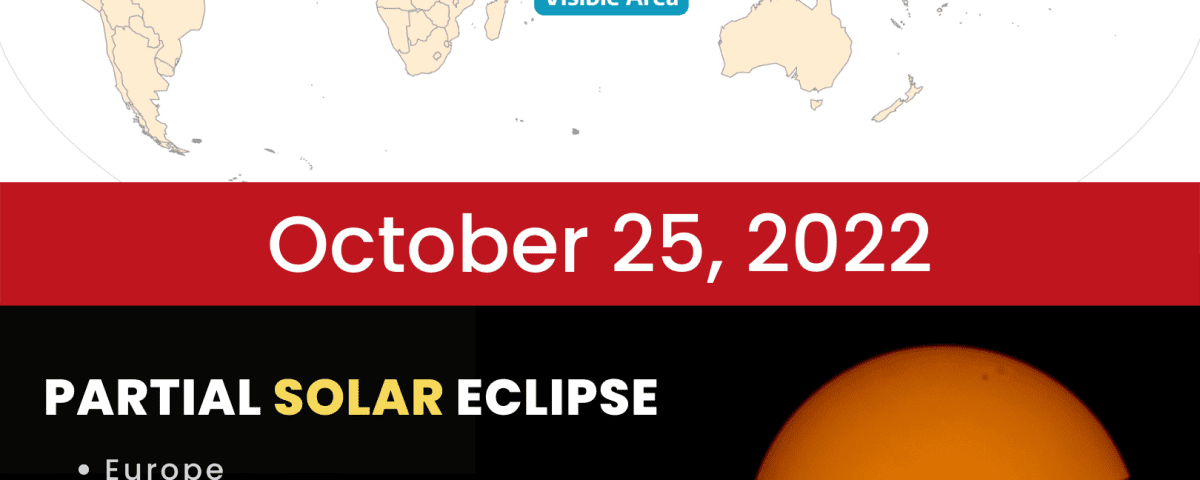
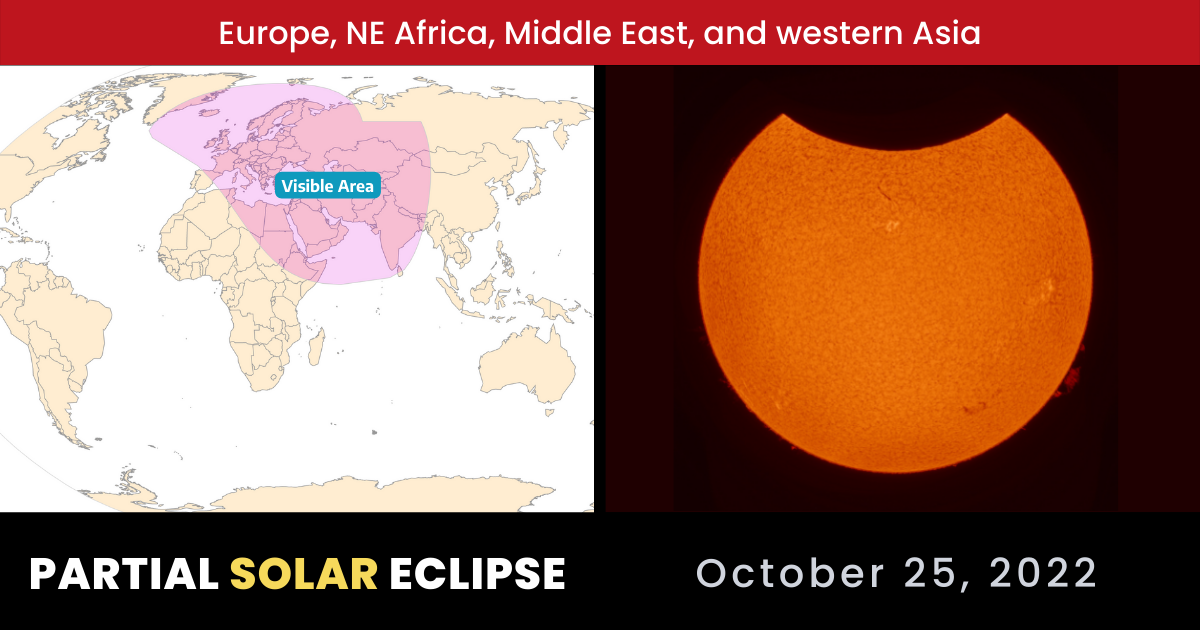
Watch the partial solar eclipse live, no matter where you are! 🌞🌑🌎
timeandate.com’s LIVE footage of the partial solar eclipse on October 25, 2022 starts at 4:30 am EDT (Tuesday morning). If the skies are clear, this eclipse is visible from most of Europe, northern Africa, the Middle East, and western parts of Asia.
https://youtu.be/0sx_vuKEGlY
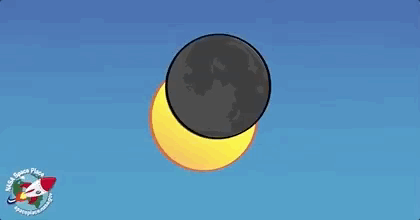 The October 25, 2022 partial solar eclipse is the first eclipse of the second eclipse season of 2022. It will be visible starting in the north Atlantic Ocean and Iceland.
The October 25, 2022 partial solar eclipse is the first eclipse of the second eclipse season of 2022. It will be visible starting in the north Atlantic Ocean and Iceland.
- The eclipse is first observed in the north Atlantic Ocean just north of Iceland at 8:58 UTC (4:58 am EDT).
- The maximum eclipse is over northern Russia at 11:00 UTC (7:00 am EDT).
- The eclipse is last observed at 13:02 UTC (9:02 am EDT).
- At maximum eclipse, 86.2 percent of the sun’s diameter is eclipsed.
- This eclipse is considered a deep partial because 86.2 percent is so close to 100 percent.
Learn more about Partial Solar Eclipses »
The Sun is still super bright, too bright to look at meaning that there is not a safe time to look at the eclipse without safe solar viewing glasses, solar filters, or other safe viewing methods.
The animation below shows the eclipse over the globe from the vantage point of the moon.
An animation of the October 25, 2022, partial solar eclipse from the moon’s vantage point. The lightly shaded circle with the black outline is the penumbral shadow. The partial eclipse is visible inside the penumbra. Animation by Fred Espenak and Michael Zeiler.
Percentage of the Sun eclipsed in select locations:
|
|
|---|
Some of the cities where the eclipse is visible with details:
SOURCE: timeanddate.com
The map of the eclipse below shows the path and full extent of the eclipse. The red line shows the path of the sun and the star is the point of the greatest eclipse.
You may have often heard that solar eclipses are rare. That statement gives the idea that they don’t happen very often. They aren’t rare in occurrence since we get on average 2 per year. What makes them rare is not when but where they happen. Earth is a very big place and is covered mostly with water. The path and extent of solar eclipses are comparatively small. Eclipses usually happen in very remote places, over the ocean, or in this case both.
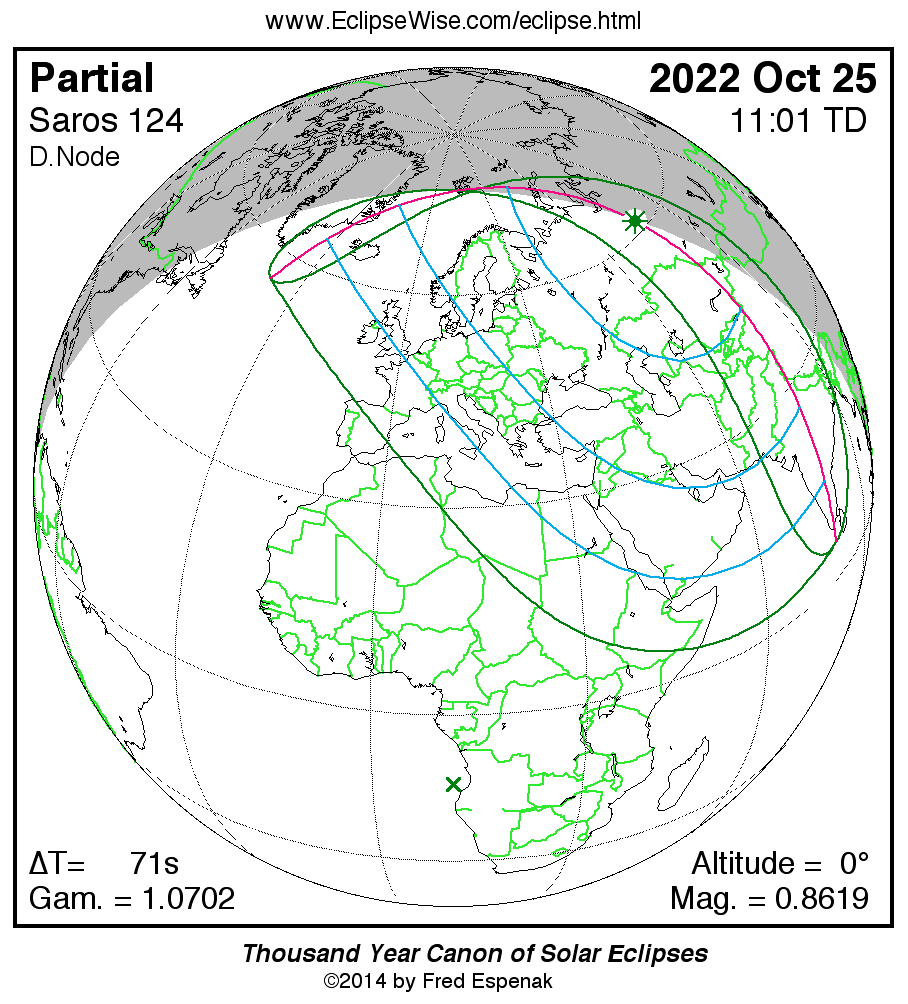
A map of the partial solar eclipse on October 25, 2022. The path is across the north Atlantic Ocean, most of Europe, northern Africa, the Middle East, and western parts of Asia. Key to Solar Eclipse Maps here. Image via Fred Espenak
November 8, 2022 — Total Lunar Eclipse
The second eclipse of the second season is a total lunar eclipse on November 8, 2022.
Where can you see it?
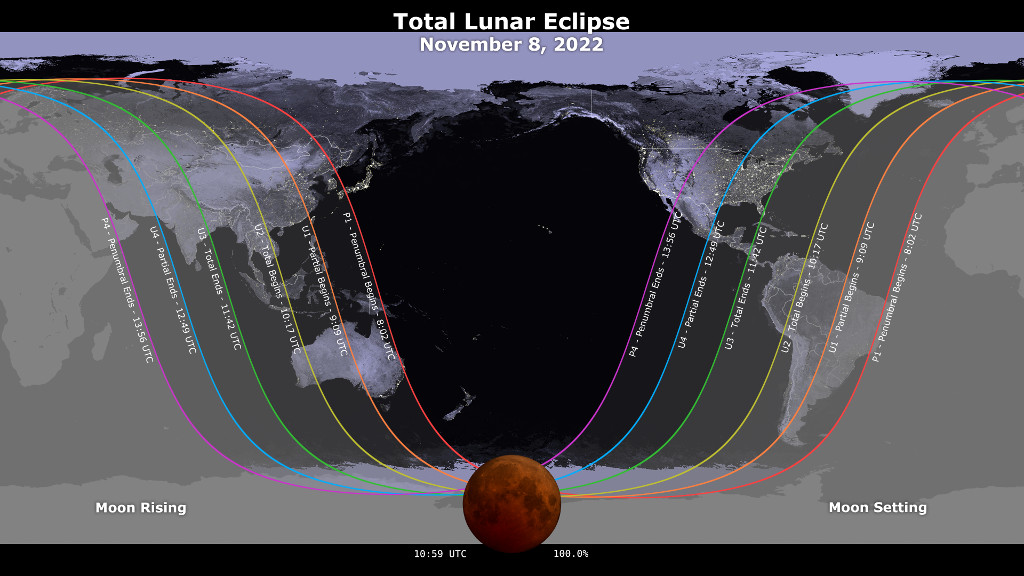
A map showing where the November 7-8, 2022, lunar eclipse is visible. Contours mark the edge of the visibility region at eclipse contact times. The map is centered on 168°57’W, the sublunar longitude at mid-eclipse. Image via the NASA SVS
Learn more about the November 7-8, 2022 Eclipse
Stay tuned for more sun fun!
Mark your calendars! The next two major eclipses in the Americas are coming soon! There is an annular solar eclipse on October 14, 2023, and a total solar eclipse on April 8, 2024. More to come.


